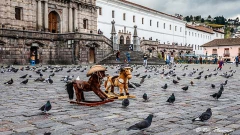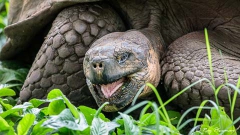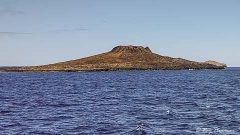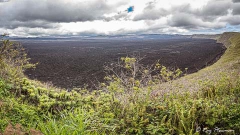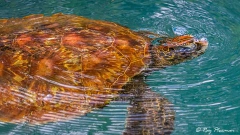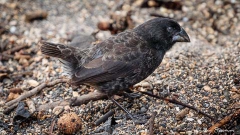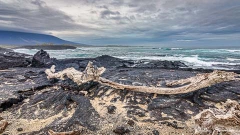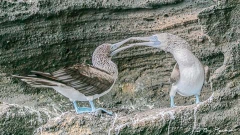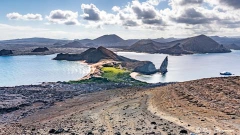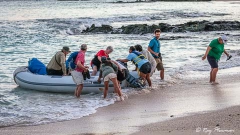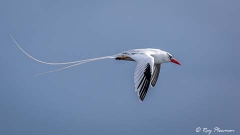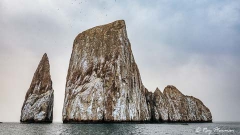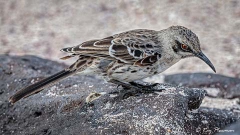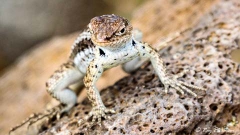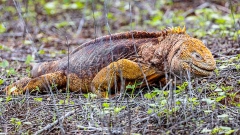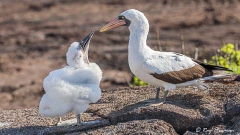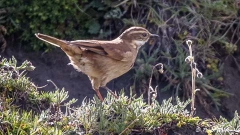Ecuador – Quito and Galapagos Islands
Photo albums of Quito and Galapagos Islands Nature and Travel featuring wildlife and landscape images. And highlights include photos at the main islands of Santa Cruz, Santiago, Isabela, Fernandina, San Cristóbal, Española, Floreana and Genovesa. Also, at the smaller islands of Santa Fé, Rabida, and Bartolomé and islets of Sombrero Chino and South Plaza. Further, albums feature Quito and Antisana Ecological Reserve in Ecuador.
The Galápagos archipelago is part of the Republic of Ecuador in South America and straddles the eastern Pacific’s equator. Moreover, they are around one thousand kilometres from the Ecuadorian coast. It is one of the ultimate destinations for naturalists and nature photographers. They are known for many endemic species (Ref 1) made famous by Charles Darwin and his scientific paper On the Origin of Species. And for their geology, Darwin was also the first geologist to explore them (Ref 2).
Quito City Tour and Botanical Gardens
We spent two nights in Quito, a precaution in case of flight delays. Further, our package included a half-day in Quito city. With the afternoon free, we visited the Botanical Gardens with a few fellow travellers. Then we flew to the Galápagos Islands for our 15-day cruise.
Santa Cruz Highlands and Puerto Ayora
On the first day in the Galápagos, we visited Santa Cruz Highlands and Puerto Ayora before joining our boat. Moreover, highlights include giant tortoises and Darwin’s finches at Rancho El Manzanillo, a tour of Charles Darwin Station and the Fish Market and the seafront in Puerto Ayora.
Santiago – Sombrero Chino and Rabida Island
Our day-two morning excursion was a walk on Sombrero Chino via a panga ride along Santiago’s southeast coast to view wildlife. Next, a cruise to Rábida Island, south of Santiago, where we anchored mid-afternoon. Then a panga ride and a hike along the red cliffs and beach.
Isabela – Sierra Negra and Puerto Villamil
Over the next four days, we visited sites on the two western islands: seven on Isabella and one on Fernandina. Being the youngest islands in the Galápagos, both have active volcanoes. On day three, we visited Puerto Villamil, the only inhabited part of Isabela, and Sierra Negra Caldera.
Isabela – Punta Moreno and Elizabeth Bay
On our fourth day, we visited two contrasting sites. Punta Moreno’s has vast lava fields, lagoons, cacti with Cero Azul volcano as a backdrop. Then in the afternoon to Elizabeth Bay for a panga ride through clear lagoons and mangrove forests. Both with abundant marine wildlife.
Isabela – Urbina Bay and Tagus Cove
Day five: A morning excursion at Urbina Bay; we followed a trail through the arid region to see Volcán Alcedo giant tortoises and the largest land iguana in the Galápagos. We spent the afternoon at Tagus Cove on board. It was too dangerous to make the dry landing ashore.
Fernandina – Punta Espinosa
Before breakfast, on day six, we made a dry landing for a walk around the Punta Espinosa’s peninsula. It has dramatic seascapes and a plethora of marine iguanas. Also, it was my first encounter with a Galápagos Hawk, no doubt there to feed on the iguanas.
Isabela – Punta Vicente Roca
On the morning of day six, we cruised to Punta Vicente Roca, an ideal opportunity for whale spotting. Since there are no landings allowed, it was a coastal panga tour to see the marine wildlife. Late afternoon we left for our next destination crossing the equator opposite the Ecuador Volcano.
Santiago – Puerto Egas and Bartolome
On day seven, we visited Puerto Egas to explore the Fur Seal Grotto trail. Then a voyage around Santiago’s north coast to Isa Bartolomé, spotting marine wildlife along the way. Then in the afternoon, a shoreline panga wildlife excursion and then ashore for an iconic Galápagos panorama.
Santa Cruz – Bachas Beach and Highlands
On the morning of day eight, we visited Bachas Beach in Santa Cruz. Then we cruised to Baltra Ferry Terminal and disembarked for a minibus tour of the Highlands and Puerto Ayora. While ashore, our boat was reprovisioned, ready for the second week of cruising.
Galapagos – South Plaza and Santa Fe
After breakfast on day nine, we visited South Plaza, a wildlife-rich island just off Santa Cruz’s east coast. Then a voyage south to Santa Fé for a panga ride around Barrington Bay. Then a wet landing on the north beach to photograph several of Santa Fé’s endemic species and subspecies.
San Cristobal – Kicker Rock and Cerro Brujo
Before breakfast on the tenth day, we cruised from Cerro Brujo, San Cristóbal to Kicker Rock, then returned to Cerro Brujo for a beach walk. At lunchtime, we moved along the coast to anchor at Puerto Baquerizo Moreno. Then, an afternoon, to Galapaguera in the highlands.
Espanola – Gardner Bay and Punta Suarez
We visited Española’s Gardner Bay for a morning beach walk and panga ride to Gardner Island on day eleven. Then, we cruised west to Punta Suárez for an afternoon visit. I photographed Española endemic species such as marine iguanas, lava lizards and mockingbirds.
Floreana – Punta Cormorant and Post Office Bay
Day twelve itinerary included two sites on Floreana. First Cormorant Point to visit the Flamingo Lagoon and green turtles coming ashore on White Sand Beach. Then a cruise to Post Office Bay for an afternoon panga ride to Devils Crown and a beach walk after ‘mail barrel’ postcard sorting.
Dragon Hill and Sullivan Bay
On day thirteen, we visited Santa Cruz’s Dragon Hill for a walk to see the Galápagos land iguana colony. Then a cruise to Sullivan Bay at Santiago for a panga ride to Bartolomé’s southern beach, before landing on Bahia Sullivan for a walk to see pahoehoe lava and pyroclastic tuff cones.
Genovesa – Darwin Bay, Prince Philip’s Steps
We visited Genovesa’s Darwin Bay Beach and Prince Philip’s Steps on day fourteen. A remote island where many land species are absent, sea birds dominate. A morning walk at Darwin Bay and an afternoon walk at Prince Philip’s Steps. Three booby species nest here, along with a few landbirds.
Puembo and Antisana Ecological Reserve
On returning from the Galápagos Islands, we spent two nights in Puembo San Jose Hotel near the airport. Our package included a full-day high altitude birding tour to the Antisana Ecological Reserve. Including several birding hot spots along the Pintag to Laguna de Mica Road.
Tour and Accommodation
Quito and Guayaquil in Ecuador are the gateways to the Galapagos Islands, with scheduled flights to Baltra (Santa Cruz) and San Cristóbal Islands. Furthermore, Quito is a good option for a stopover and day trips before and after visiting the islands.
Galapagos Islands References and Bibliography
Online Resources
1. A Brief Introduction to the Geology of the Galapagos 2021. [Online] Available from Galapagos Geology on the Web [Accessed 22-Sep-21].
2. Galapagos Wildlife 2021. [Online] Available from Galapagos Conservation Trust [Accessed 23-Aug-21].
3. Visitor Sites Map 1998-2021. [Online] Available from Galapagos Islands.com [Accessed 23-Aug-21].
4. The Galapagos Islands 2021. [Online] Available from Galapagos Conservancy [Accessed 23-Aug-21].
5. Charles Darwin Foundation Data Zone Checklist 2020. [Online] Available from Charles Darwin Foundation [Accessed 53-Oct-21].
Printed Resources (Books)
1. Fitter, J., Fitter, D., Hosking, D., Withers, M. and O’Dwyer, S. (2015). Wildlife of the Galapagos. 2nd ed. London: William Collins.
2. Swash, A. and Still, R. (2005). Birds, Mammals, & Reptiles of the Galápagos Islands. 2nd ed. London: Christopher Helm.
